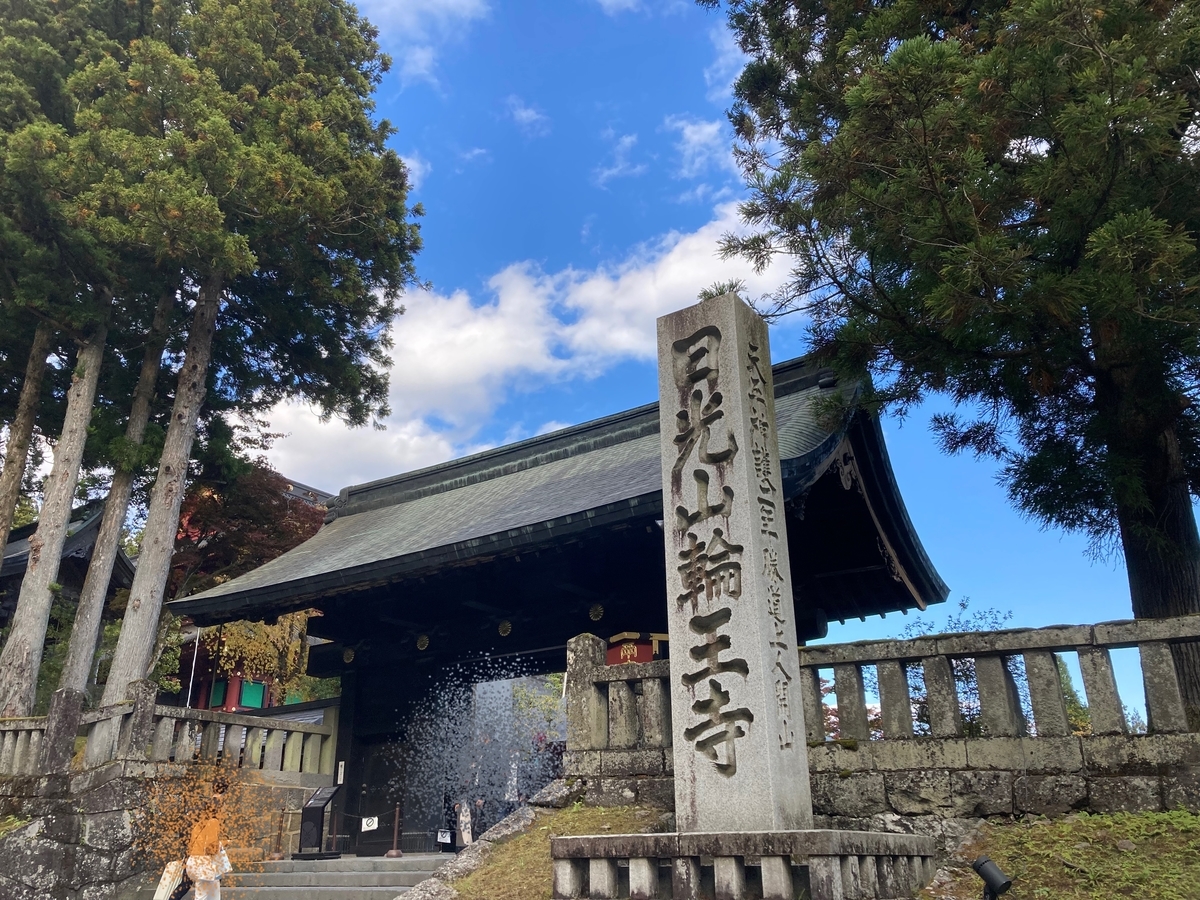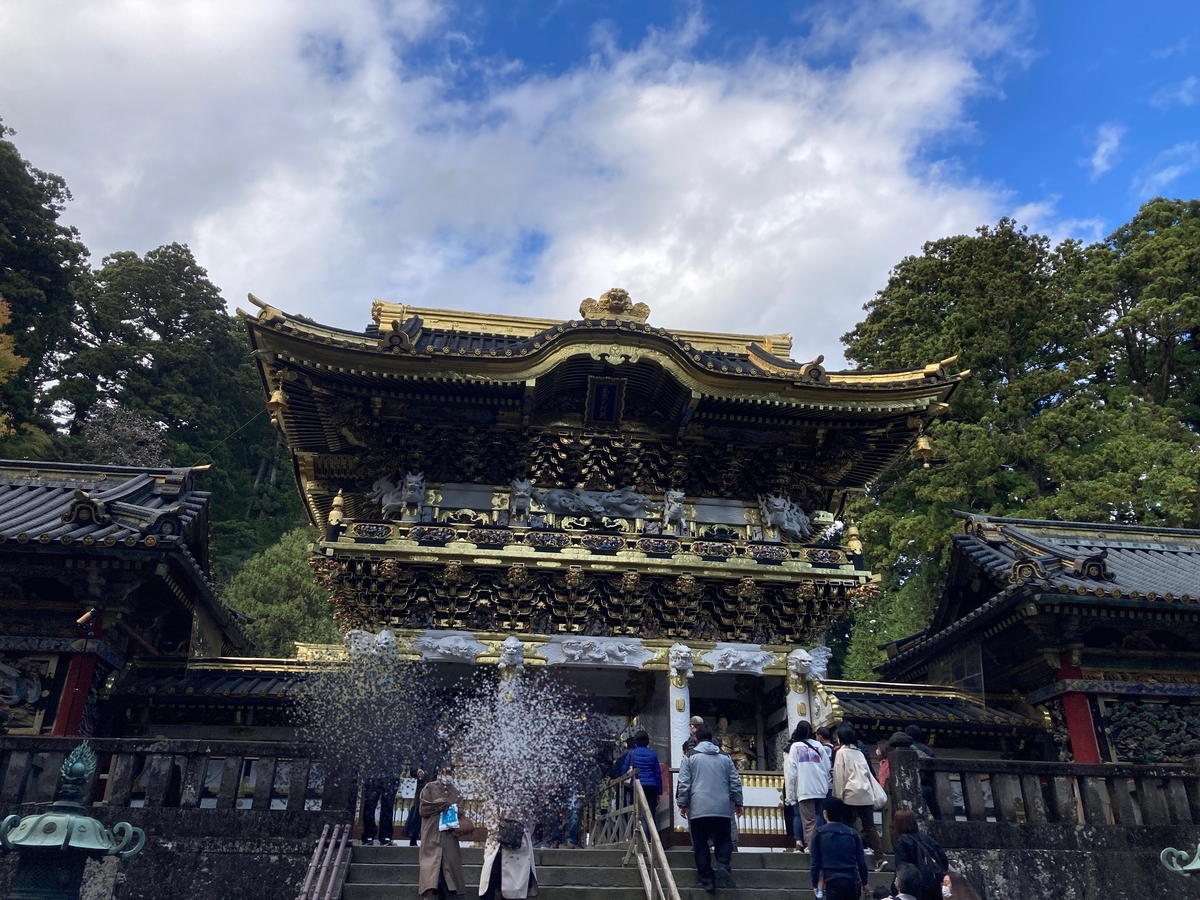“Why do tourists from all over the world gather in Nikko(日光), Japan?”
"What's amazing about Nikko Toshogu Shrine(日光東照宮)?"

I will summarize in my own way. It is a tourist attraction that Tochigi Prefecture is proud of, and a world heritage site. If you're interested in Nikko(日光), Japan, but don't know much about it, I'd appreciate it if you could refer to it.

If you take the train (JR/Tobu Nikko Line)to Nikko, you will walk along the approach as shown in the photo above. Looking for souvenirs and eating while walking is also good. It is easy to walk because the sidewalk is well secured.
The photo below is Shinkyo(神橋). Until the middle of the Showa period, trains ran all the way here, so the scenery must have been quite different. This Shinkyo Bridge is a strange bridge with a half-finished length and a dead end after crossing, but you need to pay the entrance fee. (Let's call it maintenance cost)

What's so amazing?
◆What is Shinkyo?
Shinkyo indicates that it is the entrance to a sacred place. Introducing the legend. When Shodo Shonin (a monk) faced the torrent of the Oya River and could not go further, he prayed, and two giant snakes thrown by the guardian deity became a bridge. And he was able to cross over to the other bank. The current bridge was rebuilt in 1902.
Shodo Shonin (勝道上人 735~817)is pictured below. He was active from Nara to the early Heian period, and is known to have opened Mt. Nikko after trying to climb Mt. Nikko three times!

◆The life of Shodo Shonin
・In 735, he was born in what is now Moka City, Tochigi Prefecture.
・In 762, he studied under Nyoi Sozu and later reached Shojindake.
・Go down the mountain and cross the Oya River to reach the foot of Mt. Futara.
・Across the Oya River, Shihonryu-ji Temple(which is said to have become Rinno-ji Temple)was built.
・In 767, he attempted to climb Mt. Nantai but failed.
・In 781, he attempted to climb Mt. Nantai again, but failed.
・In 782, on his third attempt, he successfully climbed the summit, praying to the gods of Mt. Nantai for 37 days.
・In 784, he climbed Mt. Nantai again and opened Jinguji Temple and Chuzenji Temple on the banks of Lake Chuzenji.
・It was a great achievement to open Mt. Nantai
・In 817, he died at the age of 82.
◆Why is the place named Nikko?
He is respected by the people as the founder of Mt. Nantai. After climbing Mt. Nantai(2486m)in 782, this mountain was named Mt. Futara. Another way of reading this kanji is "Nikko".
From here, I will introduce the history of Nikko.
◆Heian period(平安時代 794~1185)
Kukai(空海)and Ennin(円仁) came to Nikko. Ennin is said to have built Sanbutsu-do(三仏堂), Jogyo-do(常行堂), and Hokke-do(法華堂). From this point on, Rinnoji Temple(輪王寺) came to exist as the head temple of the Tendai sect(天台宗).

The photo above is Rinno-ji Temple. The buildings that now exist are reconstructions. Rinno-ji should become more famous. Photography is prohibited inside, but the three large Buddha statues are impressive.
◆Kamakura period(鎌倉時代 1185 ~1333)
Sanetomo Minamoto(源実朝) moved the main hall to the current location of Nikko Toshogu Shrine. From around this time, Mt. Nantai(男体山), Mt. Nyoho(女峰山), and Mt. Taro(太郎山) were treated as gods. Training has flourished.
◆Muromachi period to Sengoku period(室町時代~戦国時代 1336~1590)
There are 500 inns (accommodations that can only be used by monks) lined up, and it is at its peak of prosperity.
However, in 1590, when Toyotomi Hideyoshi(豊臣秀吉)attacked Odawara, Nikko sided with Hojo(北条) and the temple was confiscated. It is a period of temporary decline.

◆Edo period(江戸時代 1603~1868)
Nikko received great support from the first Tokugawa shogun, Tokugawa Ieyasu(徳川家康), the second Tokugawa Hidetada(徳川秀忠), and the third Tokugawa Iemitsu(徳川家光). Tenkai(天海) becomes the main and revived.
In 1616, Tokugawa Ieyasu invited his master Tenkai to Sunpu Castle(駿府城) and said,
・After my death, please place my body on Mt. Kuno(久能山)
・Please hold the funeral at Zojoji Temple(増上寺)
・Please set up the mortuary tablet at Daijuji Temple(大樹寺)
・After the first anniversary of the death, build a small temple in Nikko and transfer the spirit to the shrine. i will watch over this country
I left a will like this.
In short, I think it means "Even if I die, I will watch over Japan from Nikko." Tenkai accepted his will and enshrined the spirit of Tokugawa Ieyasu as 'Nikko Toshogu Shrine(日光東照宮)'.

If you know this trend, the way you perceive "Toshogu", that is, "the shrine that illuminates the east" will change completely. The third shogun, Tokugawa Iemitsu, had a particularly strong sense of respect for Ieyasu, and rebuilt Toshogu into a large, luxurious shrine.

As shown in the photo above, proceed from the area where the Yomeimon Gate(陽明門) and the main shrine are located, and aim for the tomb where Tokugawa Ieyasu is enshrined. As you walk up the hill, you will feel as if you have traveled back in time. It was quite impressive for me personally.
The samurai government(late Heian period, Kamakura period, Muromachi period, Sengoku period, Edo period)continued for many years. The Edo period lasted for about 260 years! as the culmination of that.
Prior to the Edo period, Japan was politically unstable for about 700 years. The Tokugawa Bakuhu(徳川幕府) was a climax in Japanese history, and its end was also a major turning point in Japanese history. The existence of the Seii Taishogun "Tokugawa Ieyasu" who created the Tokugawa Bakuhu is unique.

The picture above is Tokugawa Ieyasu's grave. At first it was made of wood, then stone, and after the 1683 earthquake it seems to have been made of copper.
It seems that it is not clear whether Tokugawa Ieyasu's ashes are located on Mt. Kuno or Mt. Nikko. The place where such a romantic mystery remains is also attractive.